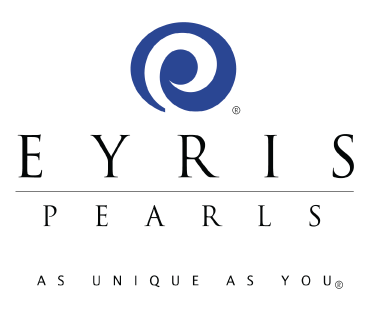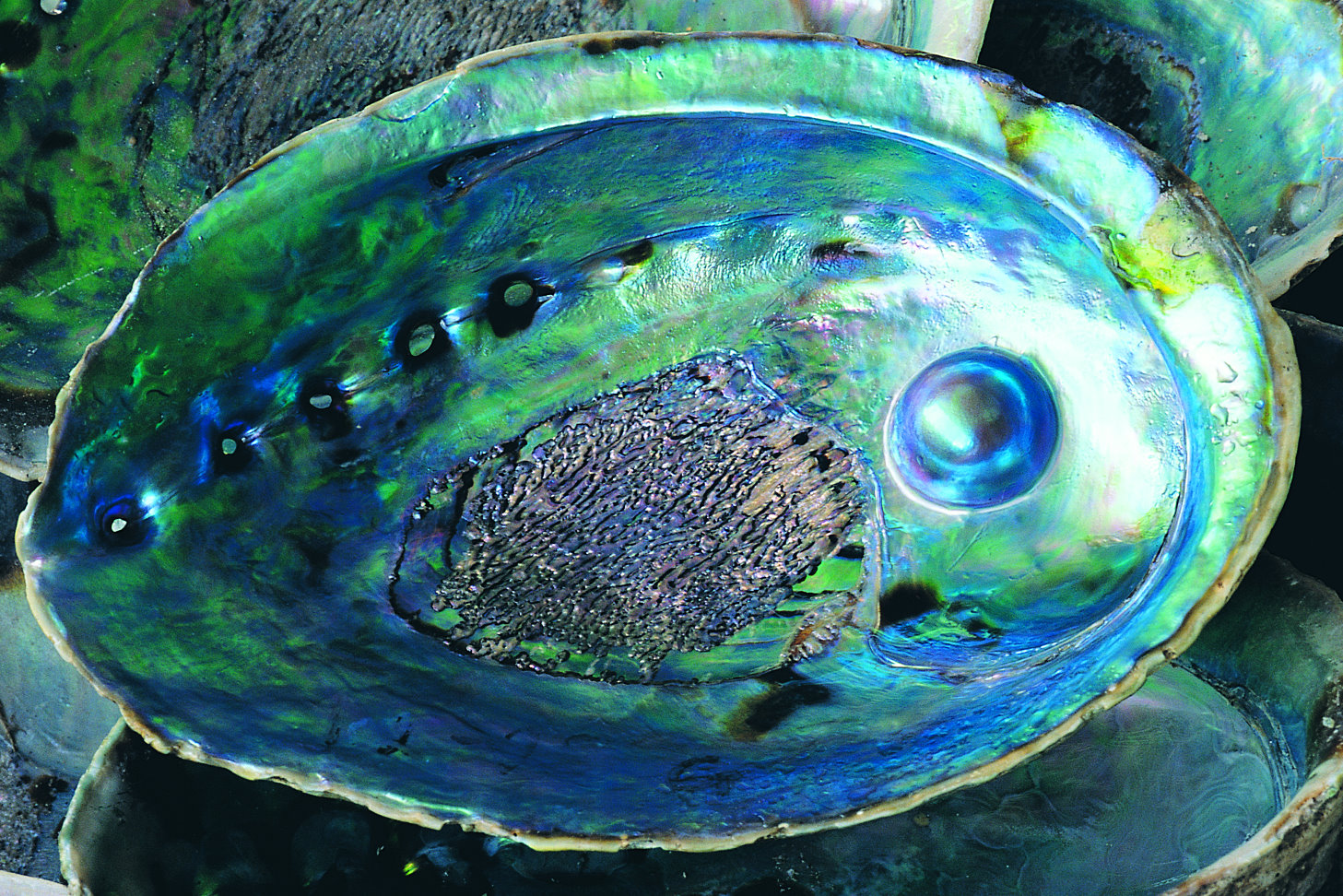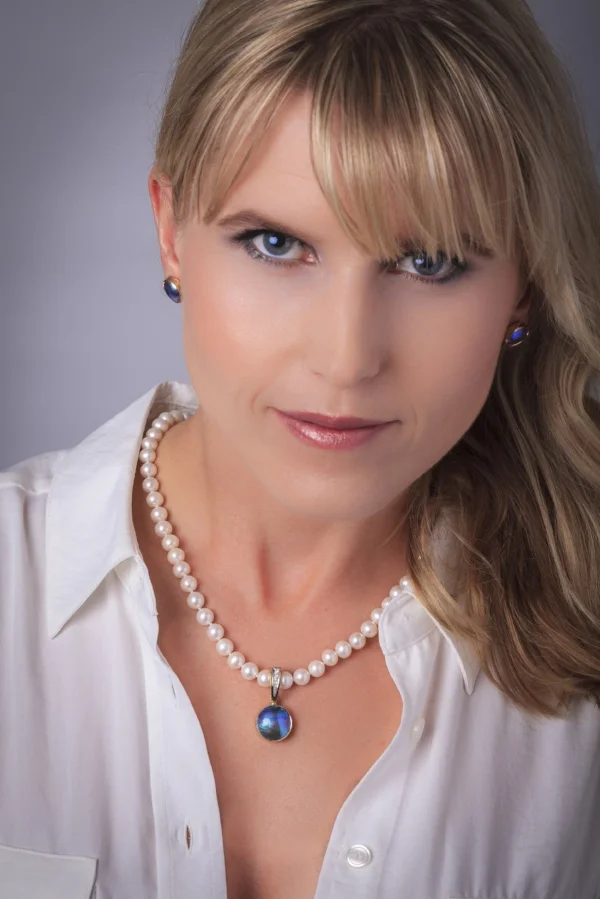Eyris Pearls Discover the Story
The Vision
The story behind the creation of one of nature’s most stunning gems is as remarkable as each individual blue pearl itself.
It’s a story of dedication and commitment through years of research and development to create a gem that is truly distinctive, truly one of a kind.
It’s a story of the vision of New Zealander Roger Beattie, who in 1989, established the first ocean based blue pearl farm at Whangamoe Inlet on New Zealand’s Chatham Islands.
His understanding of the pearl fishery and his empathy, not only for the environment, but also the very rhythms of nature’s life cycles, led Roger and his team to embark on a project which would see the creation of a new gem, unparalleled in its beauty and colour.
The Eyris Blue Pearl visitor centre is situated on the wharf in Akaroa, New Zealand. Watch the video to find out more.
Video of the Blue Pearl Story
Made by Nature
Life isn't black and white, it's full of colour and that is what sets these precious pearls apart.
The blue pearl truly captures nature - blues, green, violet and pink - bright and vibrant - soft and subtle.
This variation in colour gives each pearl a distinctive character and uniqueness.
New Zealand
New Zealand is a natural paradise full of contrast, a unique environment that remains remarkably unchanged and untouched by man.
The indigenous flora and fauna grew and flourished in their island home of abundant vegetation, snow capped mountains, clear blue skies and cool blue water. New Zealand is home to many creatures who can trace their ancestry unchanged back through the annals of time. One such animal the humble paua, New Zealand’s own abalone Haliotis iris, has given us the blue pearl.
Blue pearls capture the essence of New Zealand, a vibrant, fresh, young country, a country with a feeling of adventure and organic beauty. The colours of blue pearls are the colours of New Zealand.
“Blue Skies
Blue Seas
Blue Pearls”
Blue Pearl History
Since their discovery, thousands of years ago, pearls have captured our hearts and souls with their beauty.
The rarity of naturally formed pearls stirred the imagination to find ways to culture pearls for our pleasure. Early pearl culture was attempted in many countries with many different species of shellfish, without success.
In 1890 however, Kokichi Mikimoto succeeded in cultivating round pearls in oysters and the cultured pearl industry was born. At the same time, French scientist Louis Boutan produced the first mabe (hemispherical) pearls in abalone, but because of difficulties in raising this particular species of shellfish, he abandoned his efforts and it was not continued as a commercial venture.
Ninety years later, in the crystal clean waters of the South Pacific, the discovery of a beautiful natural pearl in the New Zealand species of abalone sparked one man’s desire to continue Louis Boutan’s earlier work.
Abalone Species
Abalone are a gentle sea snail, with a large central muscular foot and an amazingly colourful and lustrous shell.
There are over one hundred different species of abalone throughout the world's oceans - and the native New Zealand species is called Paua. Paua or Haliotis iris are only found in the cool clear waters close to the New Zealand coastline. It is these creatures which possess the greatest range of colour and iridescence of any abalone shell.
Blue Pearl Farms
Using the extensive knowledge accumulated over twenty years diving for paua, Roger Beattie and his team at Eyris Blue Pearls have pioneered ways to farm paua.
These paua are allowed to develop as naturally as possible in their own ocean environment. With the ebb and flow of the tides; through calm and stormy weather; fed only on their natural diet of nutrient rich seaweed.
Paua are voracious eaters, they eat up to 50% of their body weight per week. Without continued access to high quality natural seaweed, a blue pearl farming operation would not be viable.
Eyris Blue Pearls have operated five sea-based blue pearl farms in the waters around New Zealand.
These geographically isolated farms in the Chatham Islands, the Marlborough Sounds, Banks Peninsula and Wellington Harbour harvest healthy paua from the rocky coastline and raise them in specially designed pearl barrels suspended beneath the surface.
The Paua Fishery
New Zealand’s Paua Fishery is managed by strict quota that allow only a set amount of paua to be caught each year.
Even then, the only permitted method of harvesting is by “free-diving” without underwater breathing apparatus. Paua occur in the exposed, rougher waters off New Zealand’s rocky coastline, at a depth of between one and fifteen metres.
New Zealand’s diverse marine life and the growing populations of marine mammals means that there is an ever present danger of great white shark attacks in certain areas - so paua diving is certainly not for the faint hearted.
Blue Pearl Culture
Paua are carefully selected from the wild for their strong and vibrant shell colours.
Once harvested and settled into their new home, the paua are nucleated on board a specially developed pearling vessel.
The nucleation process mirrors what happens in nature. In the wild paua are sometimes found out of the water above the low tide level. By taking this operation to the paua, the time that the animals are out of the water is kept to a minimum.
Although most of the nucleation process is kept a secret, Eyris Blue Pearls are continuing to refine the art of attaching a seed to the inside of the shell, beneath the mantle, so that a blue pearl mabe can develop. This is a delicate process, as paua have no blood-clotting agent, and a single nick can be fatal.
Once the seed is inserted beneath the mantle, the paua begins to overlay this nucleus with its brilliant mother-of-pearl, made up of layer upon layer of conchiolin and nacre.
“Paua must not only be healthy, but happy, in order to create an exquisite, irridescent blue pearl.”
The Pearl Harvest
At least eighteen months and thousands of layers later the resulting blue pearl presents a lustre and iridescence that is almost magical to behold.
The Pearl Harvest is a time of great excitement and anticipation for the Eyris Blue Pearl Team; the culmination of a minimum of three years work for everyone involved. Will this be a good harvest, or a great harvest? Will the next paua contain a lustrous iridescent, brilliantly coloured, gem quality blue pearl?
Only one paua in five produces a marketable blue pearl and only one in fifty produces a near perfect pearl, with exquisite colours, a mirror finish, and a totally smooth surface.
By world standards, the blue pearl brings an exciting freshness that is unmatched for colour, lustre, and iridescence.
Meet Roger Beattie
Roger's story is one of dedication and commitment through years of research and development to create a gem that is truly distinctive, truly one of a kind.
It’s a story of the vision of New Zealander Roger Beattie who, in 1989, established the first ocean based blue pearl farm at Whangamoe Inlet on New Zealand’s Chatham Islands. His understanding of the pearl fishery and his empathy, not only for the environment but also the very rhythms of nature’s life cycles, led Roger and his team to embark on a project which would see the creation of a new gem, unparalleled in its beauty and colour.
Eyris Blue Pearls is a division of Sea Right Investments of which Roger is the Managing Director. As well as being half of the R & N Beattie Farming Partnership, Roger is also joint Director of NZ Kelp, alongside his wife Nicki.
Having established his fishing and fisheries investment company R & N Beattie Partnership Farming on diving paua and sea urchin, Roger has since expanded the scope of Sea Right Investments Ltd into comprehensive quota management and aquaculture processing and export.
Roger established Eyris Blue Pearls in 1999 to develop the sales and marketing of the sea-based abalone aquaculture and blue pearl production. Eyris Blue Pearls has achieved international recognition and sales within the pearl community and continues to expand its supply of this unique and beautiful New Zealand product, to a wider market.
Roger has enjoyed presenting internationally on property rights, economics, the environment, branding & marketing, and European fisheries management. Sea Right Investments is at the forefront of the move within the whole of the New Zealand fishing Industry, away from expensive government administration of fish stocks towards cost effective industry management of improving fisheries. Roger recently joined the New Zealand Seafood Industry conference, delivering a presentation titled "20 years... Wasted Resources and Missed Opportunities."














